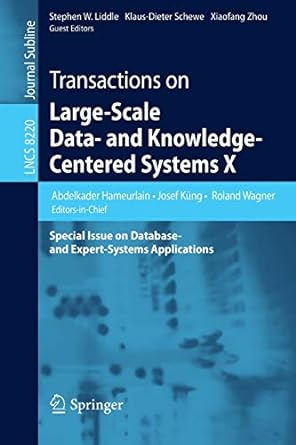Question
Create a process hierarchy tree as a memory-allocated array table of length n which references processes, indexed 0 to n-1 ( n must be 1
Create a process hierarchy tree as a memory-allocated array table of length n which references processes, indexed 0 to n-1 (n must be 1 or higher in value).
Each process is a structure consisting of four fields:
parent: a process index corresponding to the current process creator
first_child: the first child process (if any) of the current process
older_sibling: a process (if any) that was created immediately before the current process and shares the same parent
younger_sibling: a process (if any) that was created immediately after the current process and shares the same parent
All process fields are initialized to invalid values of -1. In addition, process 0 has its parent field set to itself (0), which therefore activates the process as the "root" of the hierarchy.
Once the data is initialized, have a loop statement act as the main program control. This loop will prompt the user for an integer value as a menu selection. The last selection will exit the loop statement, with an else (or default) case detecting out-of-bounds selections.
Once the loop has been completed, the array must have its memory deallocated before the program can end.
The necessary functions (not including main) are simplified as follows:
print_table() represents the table-printing function, which displays each active process in table (having a valid parent field). Every row represents a process, and every column represents a separate process field (see sample output below for examples).
create_processes() represents the create function, which prompts for the parent process located in table at parent_index (values 0 to n-1 for active processes). The function creates a new child process (for parent_index) located in table at child_index by performing the following:
Record the parent's index, parent_index, in table[child_index]
Initialize the first_child and younger_sibling fields of table[child_index] to be -1 (empty)
Record the older_sibling field of table[child_index] as youngest_sibling, which is the index location of the current youngest sibling process (soon to be previous)
Record the younger_sibling field of table[youngest_sibling] (notice the different between the words 'younger' and 'youngest') as child_index,
In the event that table[parent_index] does not have any children (first_child is empty), then skip the recording of older_sibling and younger_sibling - instead, assign the first_child field of table[parent_index] as child_index
destroy_processes() represents the base destroy function, which prompts for the parent process located in table at parent_index. The base function calls upon a recursive destroy function destroy_process_recursively() that recursively destroys all descendent processes (child, grandchild, etc.) from table[parent_index] by performing the following tasks:
The initially call the recursive function on the first_child field of table[parent_index]
The recursive function receives any field as current_index which represents the index location of the process in table that is to be destroyed
Call the recursive function on the younger_sibling field of table[current_index] (this continues until the youngest sibling is reached)
Call the recursive function on the first_child field of table[current_index] (this means that sibling processes are destroyed before children processes for any given process)
Set all fields of table[current_index] to the empty value of -1 (parent, first_child, younger_sibling,older_sibling)
What NOT to do (any violation will result in an automatic score of 0 on the assignment):
Do NOT modify the integer values for the menu selection choices (1,2,3,4) - the test script used for grading your assignment will not work correctly.
IN C PLEASE
Step by Step Solution
There are 3 Steps involved in it
Step: 1

Get Instant Access to Expert-Tailored Solutions
See step-by-step solutions with expert insights and AI powered tools for academic success
Step: 2

Step: 3

Ace Your Homework with AI
Get the answers you need in no time with our AI-driven, step-by-step assistance
Get Started


